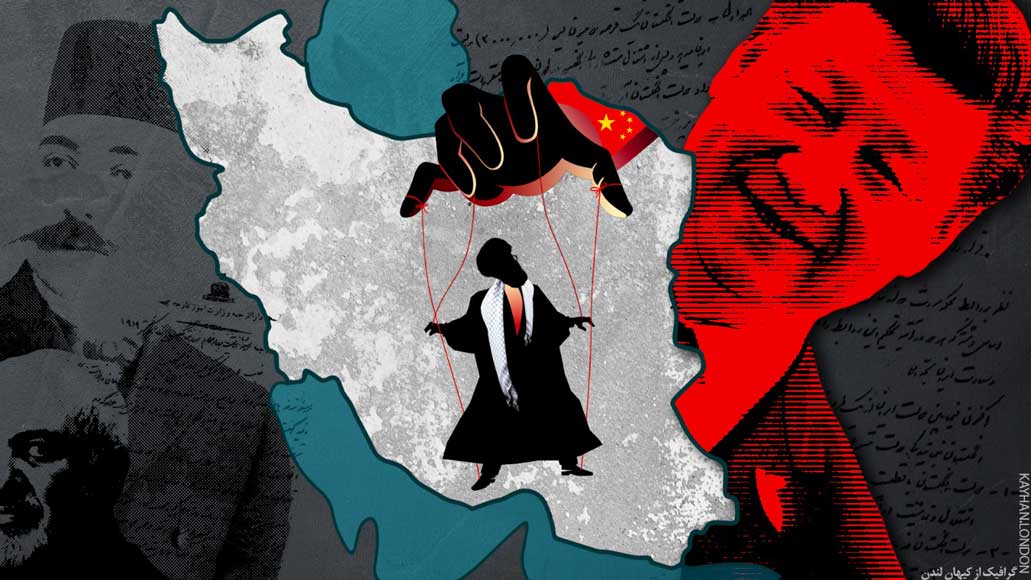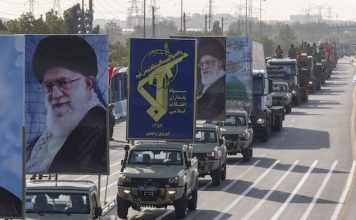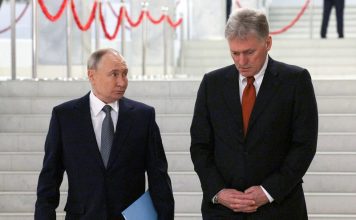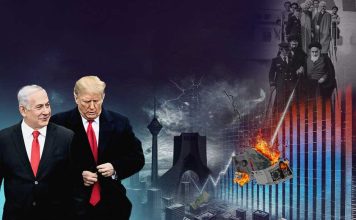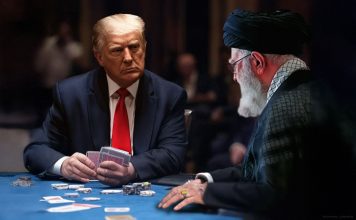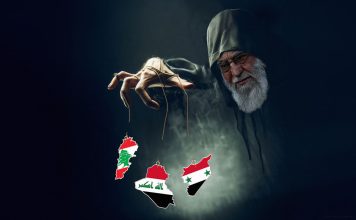By Ahmad Rafat
Iranian Foreign Minister Mohammad Javad Zarif and his Chinese counterpart Wang Yi signed a 25-year accord between the two countries on March 27 in Tehran. Many Iranians inside and outside the country reacted to the event almost immediately.
[aesop_image img=”https://kayhanlife.com/wp-content/uploads/2021/03/2021-03-27T123020Z_1454007965_RC2OJM9RA6RO_RTRMADP_3_IRAN-CHINA-scaled.jpg” panorama=”off” credit=”Iran’s Foreign Minister Mohammad Javad Zarif and China’s Foreign Minister Wang Yi bump elbows during the signing ceremony of a 25-year cooperation agreement, in Tehran, Iran March 27, 2021. REUTERS./ ” align=”center” lightbox=”on” captionsrc=”custom” captionposition=”left” revealfx=”off” overlay_revealfx=”off”]
Less than 48 hours after the agreement was formalized, some 120,000 people signed a petition on social media, protesting against “selling” Iran to China. It is unclear if the agreement is a contract, a memorandum of understanding, or just a roadmap. A day after the document was signed, people in many Iranian cities, including Tehran, Isfahan, and Karaj, poured into the streets protesting against what they said amounted to “selling Iran.”
Many famous artists have joined the protest, including actresses Nazanin Boniadi and Golshifteh Farahani, who have tweeted their opposition to the agreement, saying it was against Iran’s national interest. Some 15 film directors in Iran have also opposed the agreement, including the award-winning Jafar Panahi and Mohammad Rasoulof, who released a joint statement warning that “the public has been kept in the dark about the details of the document, which does not serve the country’s national interest.”
There are several reasons why so many Iranians believe the 25-year accord with China is not in Iran’s national interest. The Islamic Republic is the weakest it has ever been politically and economically. It also faces a security crisis. The few pages of the document that the Iranian Foreign Ministry has published show that the 25-year agreement includes political, economic, cultural, and military cooperation between the two countries. The Iranian government has not released the bulk of the document to the public. From a purely legal viewpoint, it is unclear what type of document the two sides have signed.
The Majlis (Iranian Parliament) should debate and approve any agreement or contract valid for 25 years. Whether it is an agreement or a roadmap, the Majlis must ratify every single clause within it. The Iranian government has not sent the document to the Majlis so far. Many Majlis representatives have supported the signing of the agreement without knowing its details.
Another significant issue with the document is the involvement of a senior state official from outside the Iranian government in the negotiations. Shortly after a visit by Chinese President Xi Jinping to Tehran in February 2016 to lay the groundwork for the negotiations, Beijing insisted that Iran’s Supreme Leader Ayatollah Ali Khamenei be represented in the talks.
The principal negotiator with China is Ali Larijani, the former Speaker of the Majlis and a current special advisor to Mr. Khamenei. Contrary to Foreign Minister Zarif’s statements, the government of President Hassan Rouhani has not played a crucial role in the negotiations with China.
[aesop_image img=”https://kayhanlife.com/wp-content/uploads/2021/04/Ali_Khamenei_receives_Xi_Jinping_in_his_house_7.jpeg” panorama=”off” credit=”Xi JinpinG and Ali Khamenei. SOURCE: Official website of Ali Khamenei.[This file is licensed under the Creative Commons Attribution 4.0 International license]” align=”center” lightbox=”on” captionsrc=”custom” captionposition=”left” revealfx=”off” overlay_revealfx=”off”]
The Iranian public and those who oppose the agreement are not as alarmed about these two issues as they are by China’s prominent presence in the ailing Iranian economy for the next 25 years.
Although China has been involved in the Iranian economy for the past few years, the agreement will significantly expand the scope and scale of its influence in Iran. As a result, other countries, particularly the West, will not have access to the Iranian economy. Although the volume of trade between Iran and China has dropped because of U.S. sanctions in the past few years, Beijing remains Tehran’s principal trade partner. The agreement will not be as vital to China’s growing economy as it will be to Iran, which the international community has shunned for so many years.
China’s trade volume with Iran was only 1.2 percent of its entire foreign trade volume after the 2015 Joint Comprehensive Plan of Action (JCPOA), better known as the Iran nuclear deal, and before the reimposition of sanctions in 2019. The figure is a fraction of the trade volume between China and the U.S., which forms 13 percent of China’s entire volume of trade. In the Middle East, Iran has the third-largest volume of trade with China after Saudi Arabia and the United Arab Emirates (UAE).
Under the agreement, China will invest $400 billion in the Iranian oil, gas, and petrochemical industries for the next 25 years. However, the investment is contingent on the lifting of sanctions. Shortly after the reimposition of sanctions, the China National Petroleum Corporation (CNPC) pulled out of Phase 11 of the South Pars Oil and Gas Field project. Other Chinese companies also left Iran shortly afterward. Not only did China refuse to release $20 billion of the Iranian oil revenue, but it also froze all bank accounts of the Iranian nationals and companies in that country.
It is unclear how Iran plans to repay the money even if China were to invest the entire amount. Some have suggested that Iran will repay it through the sale of its oil, gas, and petrochemical products. However, some details of the agreement raise serious concerns. For instance, under the agreement, China will receive an 18 to 20 percent discount on its purchase of Iranian oil, gas, and petrochemical products and will not have to pay the invoice for two years.
Also, China will not pay the day price for Iranian oil and gas, but rather the average price of those products in the past few years. Beijing will determine the price and the currency with which to pay Iran, which undoubtedly will not be the U.S. dollar or the British pound or the euro. Iran will have to pay between 9 to 12 percent in bank commissions for exchanging the Chinese yuan (renminbi) into top tradable currencies.
The amount of oil and gas that China will buy under the agreement will be 40 percent less than the oil and gas that Iran would typically sell to other countries. If Beijing’s previous investments in Asia and Africa are any indication, it will most likely manufacture Chinese goods locally or develop the infrastructure for transporting Chinese products to the country, which is very alarming.
Several Asian and African countries have defaulted on their loans to Beijing, and as a result, they have been forced to hand over the control of their seaports to China for several decades. Many people in Iran fear that Chabahar Port in the Gulf of Oman and Bandar Lengeh in the Hormozgan Province will have the same fate as Siri Lanka’s Hambantota Port, which will be under Chinese control for the next 99 years.
Iran has reportedly not released the document’s full text on a request from China, which has sparked speculations about the military and security cooperation included in the accord. For instance, there are reports that China will deploy 5,000 troops to Iran to protect its investment and safeguard oil and gas transport.
It is unclear if these troops, which have to be housed in several military bases, will play any other role besides protecting China’s interest in Iran. By law, the Majlis must approve the presence of a foreign military force in Iran. However, the Russian air force has used Noje Airbase (Shahrokhi Airbase), in the northwestern province of Hamadan, without the Majlis’s approval. It is doubtful that Tehran would treat the Chinese military any differently.
Although initial discussions between Iran and China began in 2016, the signing of the agreement coincided with efforts to reboot the JCPOA and fresh talks between Tehran and Washington, which had prompted many to ask if Beijing was awaiting the outcome of the U.S. presidential election before it firmly established its presence in Iran and the Persian Gulf, to avoid an escalation of tensions.
Did U.S. Secretary of State Antony Blinken and National Security Adviser Jake Sullivan discuss the Tehran-Beijing accord during their meeting with China’s most senior foreign policy official, Yang Jiechi, and Foreign Minister Wang Yi on March 19 in Anchorage, Alaska?
Is the Iran-China accord a message to the U.S. whose relationship with both countries is strained? Only time will tell.

